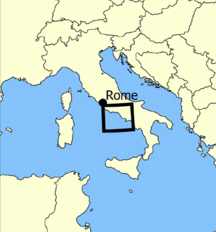"Where the little river Liris runs into the Gulf of Gaeta, seventy miles south of Rome, may be placed the natural boundary between central and southern Italy."
So begins "Greek Cities in Italy and Sicily," a beautiful little 224-page book written by David Randall-MacIver and published in 1931.
This year puts the book pretty much squarely in the middle of the period written about by Paul Fussell in "Abroad," a highly original and informative study of English literary travelogues written between the world wars, and the minor key of Greek Cities is indeed the travelogue. The absence of David Randall-MacIver from Abroad suggests that he was both too academic and too little literary to be included in Mr. Fussell's book, which makes sense to me, and it makes Greek Cities even more extraordinary to my mind.
The major key of Greek Cities is a description of Greek architectural sites in southern Italy and Sicily in 1931, with narratives about the cities where the sites are found including the cities' mythologies and most famous citizens, visitors and political figures. The book's history, then, spans the period from about the eighth century B.C. to about the third century B.C., when Rome commenced to expel Carthage permanently from Sicily and to displace the Greek presence there in the Punic Wars.
I bought a copy of "Greek Cities in Italy and Sicily" in anticipation of travelling to Sicily, an island about which I'd been reading the previous couple of years. So I pretty much skimmed the initial eighty pages about Greek cities in southern Italy and started with Chapter VIII - "From Paola to Syracuse" - which begins in the book's minor key then modulates effortlessly into its major key. I quote from Chapter VIII's first paragraphs:
"The majority of my readers in all probability will start for Sicily from Naples. And if I may advise them I would say do not go by sea, which is perfectly uninteresting. Once out of sight of land, one piece of sea is exactly like another, and if the crossing is made at night even the sea is invisible. But the railway journey down the west coast of Calabria and the east coast of Sicily is the experience of a lifetime. There is scarcely a journey in Europe which is so beautiful and so full of historic interest at every moment....If it chance to be in the middle of February, it seems as though snow-clad trees were reflecting the rising sun (in Calabria). These are the almond trees in blossom....At Villa San Giovanni the train is ferried across the straits on a steamer, a picturesque proceeding, and more practical than the method by which Herakles once crossed these waters, swimming beside the oxen stolen from Geryones with his arm resting on one horn of the leader. It would seem a very difficult undertaking to swim the straits against the currents even if we ignored Charybdis. And yet it is on record that when Himilkon stormed Messina in 397 B.C., 200 of the city's defenders threw themselves into the waters and no less than fifty succeeded in reaching the Italian shore...."
Commencing with Messina across the narrow straits at the toe of Italy's boot, Randall-MacIver follows Sicily's east coast southerly turning west where the coast does at the island's southeastern point, and continuing on he touches successively at each of the following principal Greek cities: Messina, Taormina, Acireale, Catania, Lentini (inland), Syracuse, Gela-Kamarina (Terranova), Akragas (Girgenti), Selinus (Sciacca or Castelvetrano), Segesta (inland- Salemi? Calatafimi?), and Enna (inland). In each of these cities there are ruins of Greek temples and other architectural sites.
(Note: You can view every article as one long page if you sign up as an Advocate Member, or higher).





